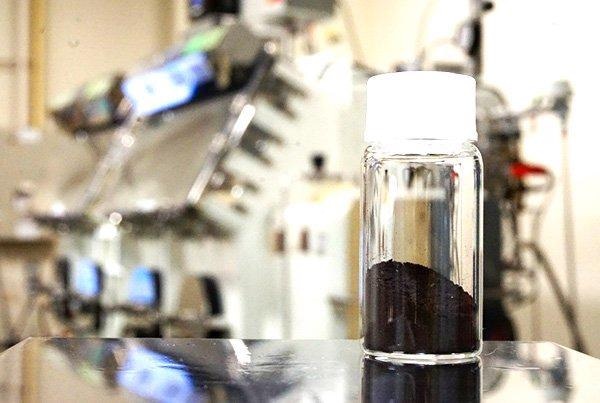Reviewed by Alex SmithApr 29 2022
A research team has demonstrated the feasibility of synthesizing electrode materials for lithium-ion batteries (LIBs) using low-cost elements. If further investigated, this method has the potential to reduce the industrial reliance on rare metals like cobalt and nickel.
 The newly synthesized electrode material containing five transition metal elements. Image Credit: ©Tomoya Kawaguchi.
The newly synthesized electrode material containing five transition metal elements. Image Credit: ©Tomoya Kawaguchi.
The study was published on April 11th, 2022, in the American Chemical Society’s journal ACS Applied Energy Materials.
Rare metals are extensively used as they have a crystal structure that is suitable for the key component of LIBs, cathode materials. Lithium can be extracted/inserted easily and reversibly in these materials.
Researchers have been looking for ways to incorporate other low-cost elements into the crystal structure for a long time. However, just as a certain amount of salt dissolves in water, so does the solubility of other elements.
Professor Tetsu Ichitsubo of Tohoku University’s Institute for Materials Research (IMR) led a team that took a different approach. Using the energy gained from “configurational entropy,” or a material’s state of randomness, they increased the solubility of constituent elements, resulting in new composition electrode materials: LiCr1/4Mn1/4Co1/4Ni1/4O2 and LiCr1/5Mn1/5Fe1/5Co1/5Ni1/5O2. This substantially lowered the use of nickel and cobalt.
Our approach unlocks the potential of other unused elements and will enable us to optimize multiple electrode properties simultaneously thanks to flexible material designs.
Tetsu Ichitsubo, Professor, Institute for Materials Research, Tohoku University
The materials created by the new approach have the potential to improve LIB safety.
Increasing configurational entropy also theoretically raises the stabilization of the electrode material, contributing to the safety of the whole battery.
Tomoya Kawaguchi, Study Corresponding Author and Assistant Professor, Institute for Materials Research, Tohoku University
With these new materials, Ichitsubo and his team were able to better understand the degradation mechanisms that affect the battery cycle. The high-entropy strategy will be used to develop novel high-performance materials, and this will serve as a guideline.
While the cyclability and capacity of the LIBs did not match those of conventional LIBs as of yet, the ability to synthesize new electrode materials widens new possibilities for LIB research.
Journal Reference:
Kawaguchi, T., et al. (2022) Influences of Enhanced Entropy in Layered Rocksalt Oxide Cathodes for Lithium-Ion Batteries. ACS Applied Energy Materials. doi.org/10.1021/acsaem.1c03968.